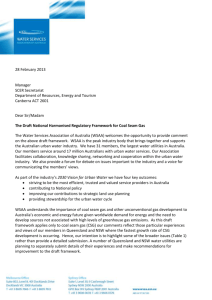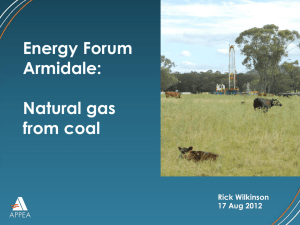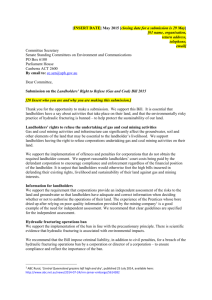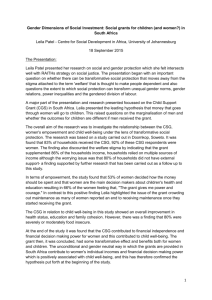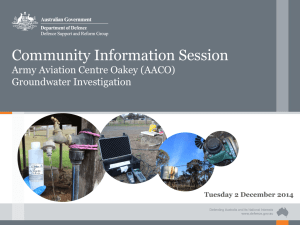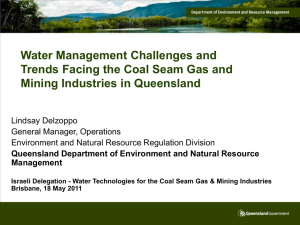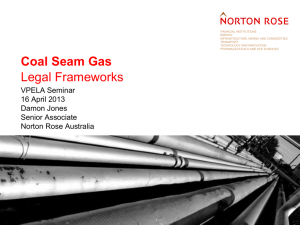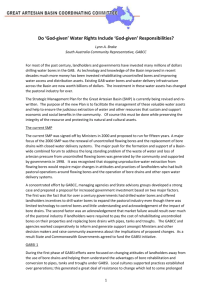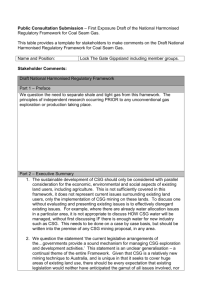Presentation - Irrigation Australia
advertisement
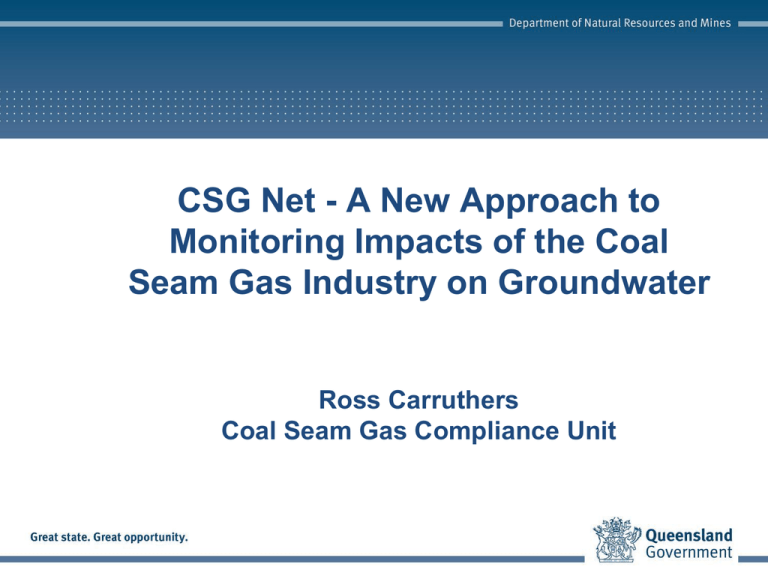
CSG Net - A New Approach to Monitoring Impacts of the Coal Seam Gas Industry on Groundwater Ross Carruthers Coal Seam Gas Compliance Unit Coal Seam Gas development in Queensland Coal Seam Gas development in Queensland Coal Seam Gas development in Queensland DNRM Coal Seam Gas Compliance Unit Engagement Team Groundwater Investigation and Assessment Team (GIAT) Other Work Units Water Licensing Petroleum and Gas Inspectorate Etc Office of Groundwater Impact Assessment GIAT Responsibilities • Groundwater investigations of potentially impaired bores • Implement and report on an independent monitoring program • Audit water monitoring bore construction, well completion reports for water monitoring bores and water sampling procedures • Engagement with industry and community stakeholders on CSG development and impacts Implement and Report on DNRM’s Independent Bore Monitoring Program Learnings from Bore Investigations to date • No bore problems to date have been as a result of CSG • Landholders have little understanding of their bores and in particular historical and current groundwater levels • Biggest asset on their properties is the least understood • Little landholder knowledge of CSG exploration / development / likely impacts • Often only source of information is over the fence discussions or media articles Old War Story Volumetric Conversion Project – SE South Australia • Conversion of existing area based water licenses to volumetric entitlements • Provided incentives for landholders to install meters and collect water use data. • Annual water use returns where landholders calculated volumes pumped. Comparison Between Calculated and Metered Data Benefits in Involving the Community CSGNet • Proactive program • Landholders collecting data from their bores • Provide current information on CSG development and monitoring • Inform landholders on local hydrogeology and bore information • Collect, store and report back • Provide annual forum for sharing information Transparency Involvement Trust CSG Net CSG Net Local CSGNet Steering Committee Pilot CSGNet Workshop WHAT DO WE WANT TO MEASURE & RECORD Artesian bore • The Static Head • If possible the bore should be shut off for at least 12 hours and a reading taken and recorded. Sub-artesian bore • The Standing Water Level • If possible the pump should be shut off for at least 12 hours and a reading taken and recorded. HOW CAN WE DO THIS ? • Accurately • Easily • Economically Airline & Pressure gauge setup. Involving Pump Suppliers / Installers • Pump companies important conduit to landholders • Local suppliers invited to CSG Net workshops • Airline kit giveaways as ‘incentives’ • Encourage landholders to install airlines whenever undertaking pump maintenance activities • Will be holding regular workshops with suppliers to provide support and share information & methods Benefits • Landholders empowered to monitor their own bores and ‘own’ data • Improved understanding of CSG industry, groundwater systems and their bores • Early warning of any CSG impacts on bores • Change the bore monitoring paradigm to a ‘must do’ • Flow-on benefits to the Pump Supply and Maintenance industry. Involve Landholders or Risk the Consequences
